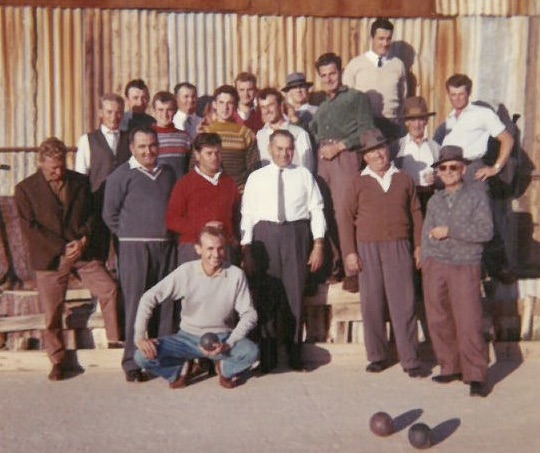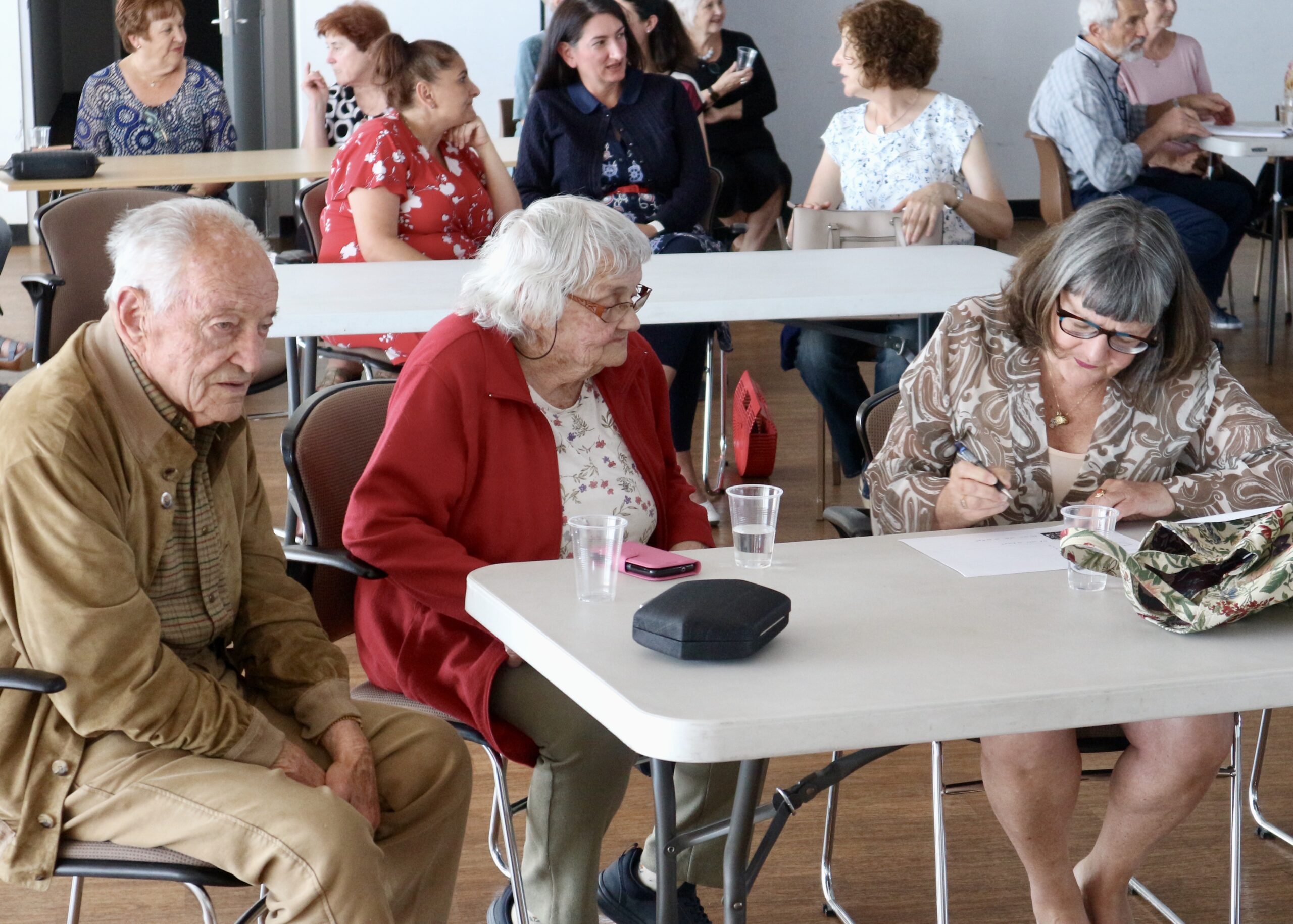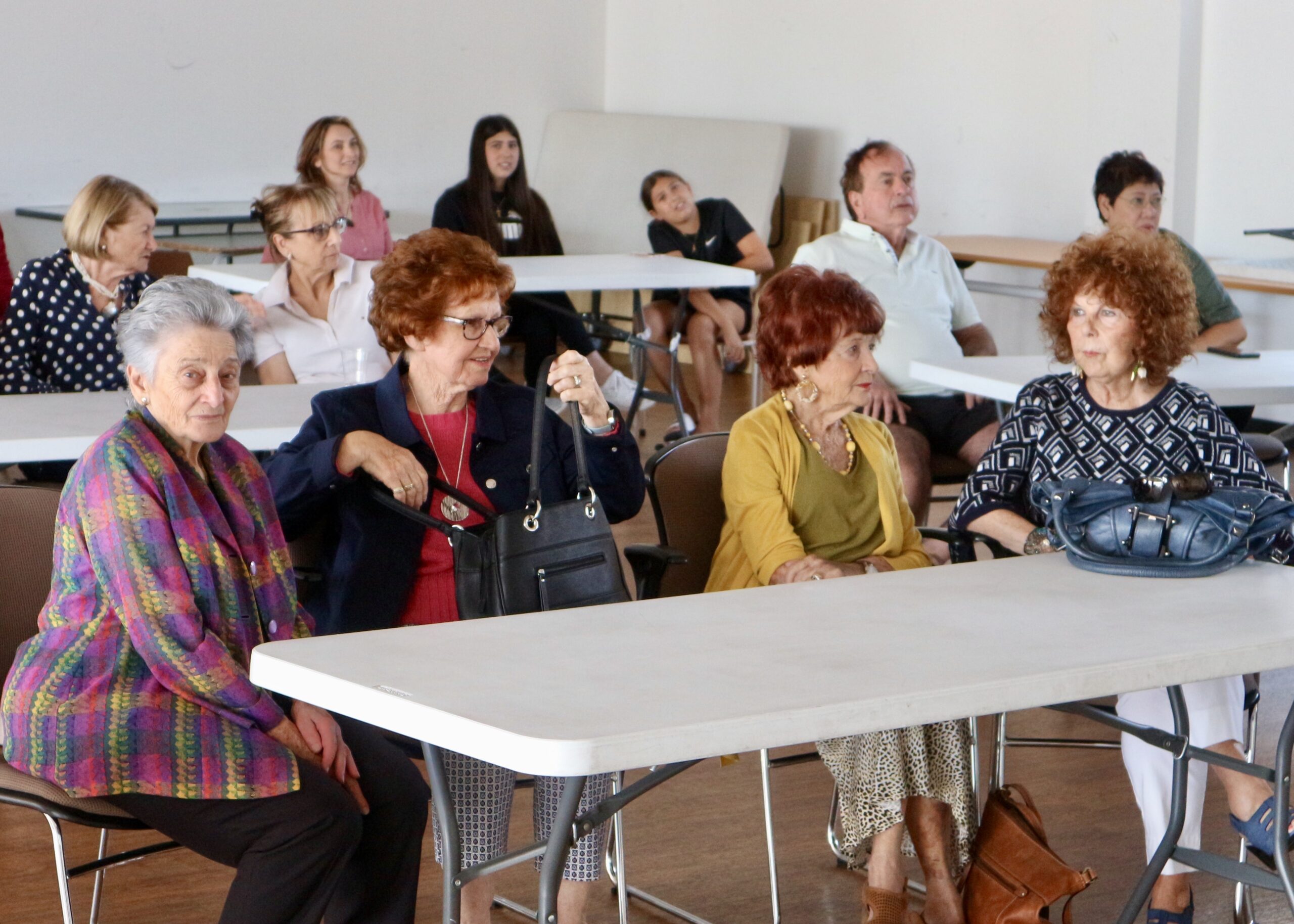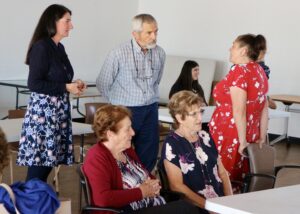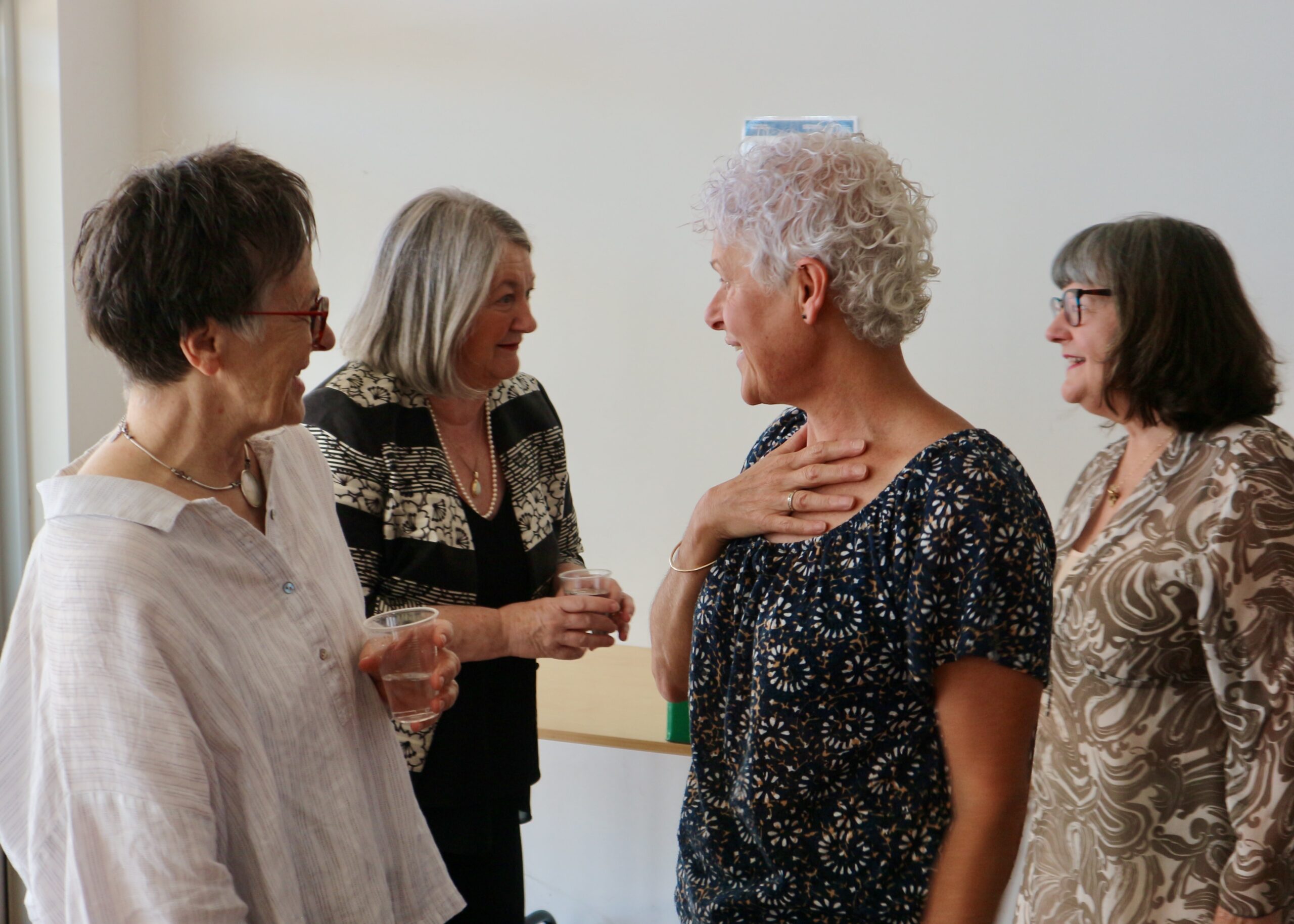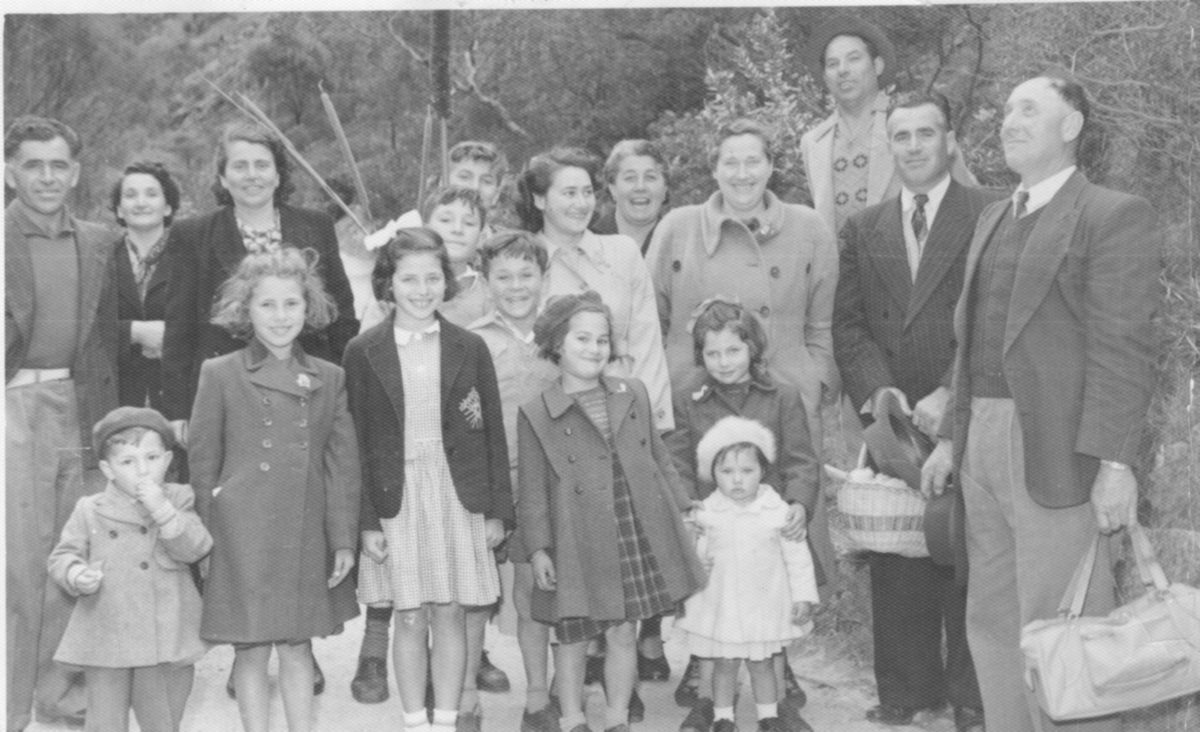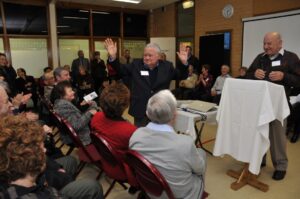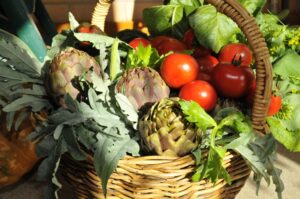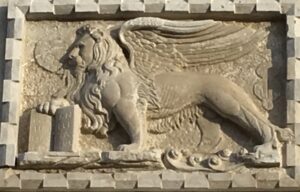Bocce has a long history – it was practised in Roman and Greek cultures and some historians say it even dates back to 5000 BC when cave paintings in Egypt show boys playing a similar game. Over time stone, coconuts and metal have been used as bocce balls. It seems that it has been a sport mainly for men.

Bocce games had been part of the recreation of Veneto men who lived in the boarding houses in the west end of the city from at least the 1930s. I have heard some of the older generation speak of the bocce court at the back of Mrs Stocco’s boarding house in Waymouth Street where men gathered to play and socialise. Most men living in the boarding houses were single and bocce was an opportunity to share leisure time with other veneti.
Some people interviewed for the Veneto market gardeners oral history project remember that their fathers used to play bocce on Sundays at the home of a Veneto man who lived at Rosewater. In the 1930s and 1940s, some market gardeners rode bikes there sometimes donkeying their sons the eight kilometre trip.

Bruno Piovesan recalled that the social lives of the Veneto market gardeners were limited especially during the war years but there was time for bocce:
They used to get together of a Sunday afternoon and I suppose they used to just play bowls if they could find a spot. I remember we used to go down to Rosewater, my father used to go down Rosewater. But in those years you only had so many gallons of fuel, you were restricted with your fuel because of the wartime and that, and you had to be careful where you drove a truck because if they saw you driving a truck without the purpose of going in the garden industry I think they could have fined you or something. And they used to take a chance and go to Rosewater, they had these bocce courts and that, and as kids we used to go there and just play with all the other kids and their parents at the time, and that was Sunday afternoon fun.
(Bruno Piovesan, Interview, OH 872/ 4 October 2008, page 10)
Assunta Giovannini nee Tonellato remembers the bocce courts behind the Sbrissa house on Findon Road: “The men used to congregate there on Sundays or weekends or whenever to play bocce.” ( Interview, OH 872/6 9 October 2014, page 30)

In the 1950s “The Southern Cross”, the Catholic weekly paper, had a special section for the Italian community, L’Angolo degli Italiani. There were articles about different matters and the dates and times of Italian masses were announced as well as social events. On the 11 June 1954, a bocce competition was advertised for 20 June which was to be held on the four Sbrissa bocce courts. Contestants had to register with the President, Eugenio (Marena) Zalunardo or with the Secretary, Signor Corradini. Prizes were offered and the cost of entry was five shillings. Amadio and Aida Valentin nee Recchi also had a bocce court alongside their house on Valetta Road for a time.
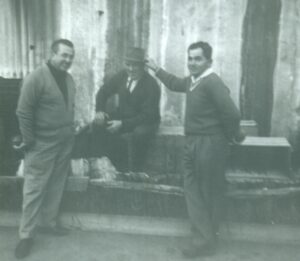
Diana Panazzolo nee Santin remembers that lots of men played bocce every Sunday afternoon on the court at the back of the Santin packing shed on Frogmore Road. (OH 872/27 13 September 2013 p 10)
What did the women do when the men played bocce? It was often a time when women visited each other’s houses and enjoyed company on a Sunday afternoon. Several narrators recall visiting, spending time knitting and sharing conversation and coffee with other women and children from different families played together.
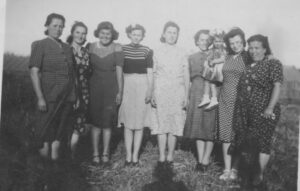
Madeleine Regan
7 February 2021
